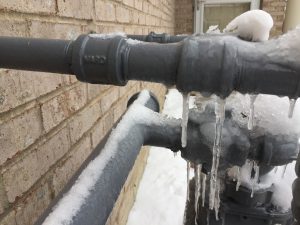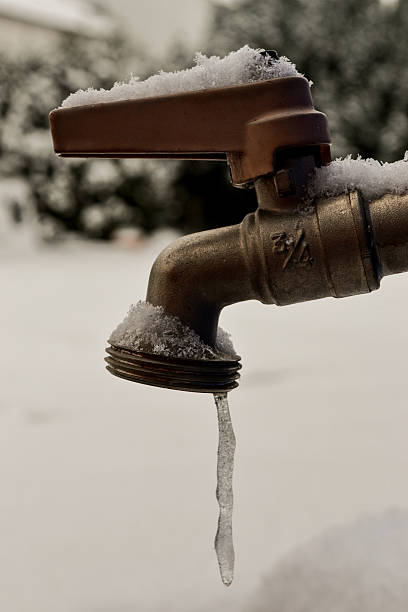Preventing Frozen Plumbing in Winter: Key Advice
Preventing Frozen Plumbing in Winter: Key Advice
Blog Article
Are you on the lookout for insight about Prevent Frozen Pipes ?

Winter can damage your plumbing, specifically by freezing pipelines. Right here's how to stop it from happening and what to do if it does.
Intro
As temperature levels drop, the risk of icy pipelines rises, potentially bring about pricey repair services and water damages. Understanding how to stop icy pipes is critical for homeowners in chilly climates.
Prevention Tips
Shielding susceptible pipelines
Wrap pipes in insulation sleeves or use warm tape to safeguard them from freezing temperatures. Focus on pipelines in unheated or outside areas of the home.
Home heating techniques
Maintain indoor spaces appropriately warmed, specifically areas with plumbing. Open up cabinet doors to enable warm air to circulate around pipes under sinks.
Just how to identify icy pipes
Try to find reduced water circulation from faucets, uncommon smells or sounds from pipes, and noticeable frost on revealed pipelines.
Long-Term Solutions
Architectural modifications
Take into consideration rerouting pipelines away from exterior wall surfaces or unheated locations. Include extra insulation to attic rooms, basements, and crawl spaces.
Updating insulation
Invest in top notch insulation for pipes, attic rooms, and wall surfaces. Correct insulation aids keep constant temperatures and decreases the risk of frozen pipelines.
Shielding Exterior Pipes
Garden hoses and outside taps
Disconnect and drain yard hose pipes prior to winter months. Set up frost-proof faucets or cover outside taps with protected caps.
Understanding Icy Pipelines
What creates pipelines to freeze?
Pipes ice up when exposed to temperature levels listed below 32 ° F (0 ° C) for prolonged periods. As water inside the pipelines ices up, it broadens, taxing the pipeline wall surfaces and potentially creating them to burst.
Risks and problems
Frozen pipes can lead to supply of water interruptions, residential or commercial property damages, and pricey fixings. Ruptured pipes can flood homes and cause comprehensive architectural damages.
Indications of Frozen Water Lines
Recognizing icy pipelines early can avoid them from bursting.
What to Do If Your Pipelines Freeze
Immediate actions to take
If you think frozen pipes, keep taps open up to alleviate pressure as the ice melts. Use a hairdryer or towels taken in warm water to thaw pipelines slowly.
Final thought
Stopping frozen pipelines requires proactive measures and quick actions. By understanding the reasons, signs, and preventive measures, homeowners can safeguard their pipes throughout winter.
5 Ways to Prevent Frozen Pipes
Drain Outdoor Faucets and Disconnect Hoses
First, close the shut-off valve that controls the flow of water in the pipe to your outdoor faucet. Then, head outside to disconnect and drain your hose and open the outdoor faucet to allow the water to completely drain out of the line. Turn off the faucet when done. Finally, head back to the shut-off valve and drain the remaining water inside the pipe into a bucket or container. Additionally, if you have a home irrigation system, you should consider hiring an expert to clear the system of water each year.
Insulate Pipes
One of the best and most cost-effective methods for preventing frozen water pipes is to wrap your pipes with insulation. This is especially important for areas in your home that aren’t exposed to heat, such as an attic. We suggest using foam sleeves, which can typically be found at your local hardware store.
Keep Heat Running at 65
Your pipes are located inside your walls, and the temperature there is much colder than the rest of the house. To prevent your pipes from freezing, The Insurance Information Institute suggests that you keep your home heated to at least 65 degrees, even when traveling. You may want to invest in smart devices that can keep an eye on the temperature in your home while you’re away.
Leave Water Dripping
Moving water — even a small trickle — can prevent ice from forming inside your pipes. When freezing temps are imminent, start a drip of water from all faucets that serve exposed pipes. Leaving a few faucets running will also help relieve pressure inside the pipes and help prevent a rupture if the water inside freezes.
Open Cupboard Doors
Warm your kitchen and bathroom pipes by opening cupboards and vanities. You should also leave your interior doors ajar to help warm air circulate evenly throughout your home.

We had been shown that editorial on Winter Plumbing Precautions: Preventing Frozen Pipes from a good friend on our other web property. Be sure to take a moment to promote this content if you appreciated it. I take joy in your readership.
Visit My Web Page Report this page